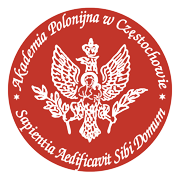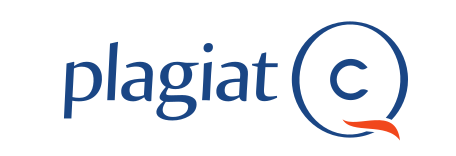STEM TASKS IN PHYSICS TO DEVELOP STUDENTS' DIGITAL COMPETENCE
Abstrakt
The article explores the potential of STEM-based physics tasks as a means of fostering students’ digital competence within the context of contemporary educational transformations. Emphasis is placed on the integration of digital technologies, interdisciplinary approaches, and practice-oriented learning into physics education, aimed at developing skills essential for life in the digital society and Industry 4.0. Based on a review of recent scholarly research, digital competence is defined as encompassing information literacy, skills in using digital devices, data handling, programming, modeling, and presenting research outcomes via digital tools. The study employs a range of theoretical methods, including analysis, synthesis, generalization, systematization, modeling, and predictive reasoning. It generalizes typical examples of STEM tasks in physics implemented through virtual laboratories, simulations, robotics platforms, software-based modeling, and data analytics. A systematized mapping of task types to specific components of digital competence is presented. The study demonstrates that the use of augmented reality (AR), virtual reality (VR), electronic modules, and multimedia platforms (e.g., YouTube) enhances students’ learning efficiency and fosters both independent and collaborative activity.The paper also addresses key challenges in implementing STEM tasks, including teacher preparedness, infrastructure modernization, and the adaptation of methodological strategies to blended and distance learning environments. The conclusion argues that the full potential of STEM-based physics tasks can only be realized through integrated educational policies, continuous professional development of teachers, and the creation of pedagogical conditions conducive to implementing interdisciplinary digital projects in schools. Future research should focus on the empirical evaluation of the effectiveness of such STEM tasks in real-world educational settings.
Wykaz bibliografii
2. Ilnitska, K. (2020). Robototekhnika yak ob’iekt vyvchennia maibutnimy uchyteliamy fizyky v mezhakh dystsypliny «Osnovy suchasnoi elektroniky» [Robotics as an object of studying by future teachers of physics within the discipline “Bases of modern electronics”]. Zbirnyk naukovykh prats UmanSKHU, 1, 80–86. Retrieved from http://znp.udpu.edu.ua/article/view/208173/208451 [in Ukrainian]
3. Jiménez-Fanjul, N., González-Martínez, J., & Ruiz-Madrid, M. N. (2022). Challenges of integrating STEM education into science teacher education. Journal of Technology and Science Education, 12(2), 546–557. https://doi.org/10.3926/jotse.1191
4. Kalogiannakis, M., Papadakis, S., & Trampas, A. (2023). The Integration of STEM in Early Childhood Education: Teachers’ Views and Challenges. Education Sciences, 13(5), 490. https://doi.org/10.3390/educsci13050490
5. Khoiri, N., Ristanto, S., & Kurniawan, A. (2023). Project-Based Learning Via Traditional Game in Physics Learning: Its Impact on Critical Thinking, Creative Thinking, and Collaborative Skills. Jurnal Pendidikan IPA Indonesia, 12(2), 286–292. https://doi.org/10.15294/jpii. v12i2.43198
6. Kramar, S., & Shyshkina, M. (2024). Metodychni osoblyvosti vykorystannia Arduino na platformi Tinkercad u seredovyshchi neformalnoi osvity vchyteliv [Methodical features of the use of Arduino on the base of Tinkrcad platform in the process of non-formal education of teachers]. Fizyko-matematychna osvita – Physical and Mathematical Education, 39(5), 27–33. https://doi.org/10.31110/fmo2024.v39i5-04 [in Ukrainian]
7. Le, B., Lawrie, G. A., & Wang, J. T. H. (2022). Student Self-perception on Digital Literacy in STEM Blended Learning Environments. Journal of Science Education and Technology, 31(3), 303–321. https://doi.org/10.1007/s10956-022-09956-1
8. Leung, W. M. V. (2023). STEM Education in Early Years: Challenges and Opportunities in Changing Teachers’ Pedagogical Strategies. Education Sciences, 13(5), 490. https://doi.org/10.3390/educsci13050490
9. Mazur I.-S., Franko Yu. (2023). Pro neobkhidnist vyvchennia robototekhniky yak zasobu formuvannia profesiinykh kompetentnostei maibutnikh inzheneriv-pedahohiv [About the need to study robotics as a means of forming the professional competences of future engineer educators]. Osvita. Innovatyka. Praktyka –Education. Innovation. Practice, 11(1), 16–21. https://doi.org/10.31110/2616-650X-vol11i1-003 [in Ukrainian]
10. Neumann, M. M., Neumann, D. L., & Kuehn, L. (2023). Exploring the role of home digital literacy practices and sociocultural factors in young children’s learning. Journal of Computer Assisted Learning, 39(1), 120–135. https://doi.org/10.1111/jcal.12866
11. Purwanto, A., Nurfadilah, R., & Suryana, D. (2021). Development of e-modules using the STEM-PjBL model to improve mathematics literacy skills. Journal of Physics: Conference Series, 1839(1), 012031. https://doi.org/10.1088/1742-6596/1839/1/012031
12. Rudenko, Y., Drushlyak, M., Naboka, O., Proshkin, V., & Semenikhina, O. (2025). Devel- opment of Youth Information Hygiene Skills: The Gap Between the Self-Assessment and Real State. In E. Smyrnova-Trybulska, N.-S. Chen, P. Kommers, & N. Morze (Eds.), E-Learning and Enhancing Soft Skills: Contemporary Models of Education in the Era of Artificial Intelligence (pp. 81–104). Springer Nature Switzerland. https://doi.org/10.1007/978-3-031- 82243-8_5
13. Samsudin, M. A., Jamali, S. M., Md Zain, A. N., & Ale Ebrahim, N. (2020). The Effect of STEM Project-Based Learning on Self-Efficacy Among High-School Physics Students (SSRN Scholarly Paper 3574024). Social Science Research Network. https://doi.org/10.2139/ssrn.3574024
14. Sari, D. P., Ramadhani, R., & Rahmayanti, H. (2023). Development of ethnoscience-based physics e-modules with an integrated STEM approach on smartphones. Momentum: Physics Education Journal, 6(1), 45–53. https://doi.org/10.21067/mpej.v6i1.6316
15. Semenikhina, O. V., Drushlyak, M. G., & Shishenko, I. V. (2022a). STEM proiekt yak zasib navchannia modeliuvannia maibutnikh vchyteliv matematyky ta informatyky [STEM project as a means of learning modeling for pre-service mathematics and computer science teachers]. Information Technologies and Learning Tools, 90(4), 46–56. https://doi.org/10.33407/itlt.v90i4.4946 [in Ukrainian]
16. Semenikhina, O., Yurchenko, K., Shamoniia, V., Khvorostina, Y., Yurchenko, A. (2022b). STEM-Education and Features of its Implementation in Ukraine and the World. Paper presented at the 2022 45th Jubilee International Convention on Information, Communication and Electronic Technology, MIPRO 2022 – Proceedings, 690–695. https://doi.org/10.23919/ MIPRO55190.2022.9803620
17. Setiawan, S., Kurniawan, E., & Nugraha, B. (2023). Virtual and Augmented Reality in STEM Learning: A Review. International Journal of Arts, Religion and Social Studies, 6(4), 67–75. https://doi.org/10.51594/ijarss.v6i4.1043
18. Shamonia, V., Semenikhina, O., Drushlyak, M., & Lynnyk, S. (2019).Computer visualization of logic elements of the information system based on Proteus. 15th International Conference on ICT in Education, Research, and Industrial Applications (ICTERI 2019). Kherson, 459–463.
19. Soyoof, A., Reynolds, B. L., Neumann, M., Scull, J., Tour, E., & McLay, K. (2024). The impact of parent mediation on young children’s home digital literacy practices and learning: A narrative review. Journal of Computer Assisted Learning, 40(1), 65–88. https://doi.org/10.1111/jcal.12866
20. Sulaeman, N., Efwinda, S., & Putra, P. (2022). Teacher readiness in STEM education: Voices of Indonesian Physics teachers. Journal of Technology and Science Education, 12(1), 68–82. https://doi.org/10.3926/jotse.1191
21. Wang, B., & Li, P.-P. (2022). Digital creativity in STEM education: the impact of digital tools and pedagogical learning models on the students’ creative thinking skills development. Interactive Learning Environments, 32(6), 2633–2646. https://doi.org/10.1080/10494820.2022.2155839
22. Widiastuti, R., Arif, M. F., & Sutrisno, H. (2021). YouTube-based project learning and physics education in cognitive domain. Al-Ishlah: Jurnal Pendidikan, 13(3), 1575–1583. https://doi.org/10.35445/alishlah.v13i3.1241
23. Yurchenko, A., Khvorostina, Yu., Shamonia, V., Soroka, M., & Semenikhina, O. (2023a). Digital Technologies in Teaching Physics: An Analysis of Existing Practices. 2023 46th MIPRO ICT and Electronics Convention (MIPRO), 666–671. https://doi.org/10.23919/MIPRO57284.2023.10159870
24. Yurchenko, A., Rozumenko, A., Rozumenko, A., Momot, R., & Semenikhina, O. (2023b). Cloud technologies in education: the bibliographic review. Informatyka, Automatyka, Pomiary W Gospodarce I Ochronie Środowiska, 13(4), 79–84. https://doi.org/10.35784/iapgos.4421
Abstract views: 15 PDF Downloads: 7







